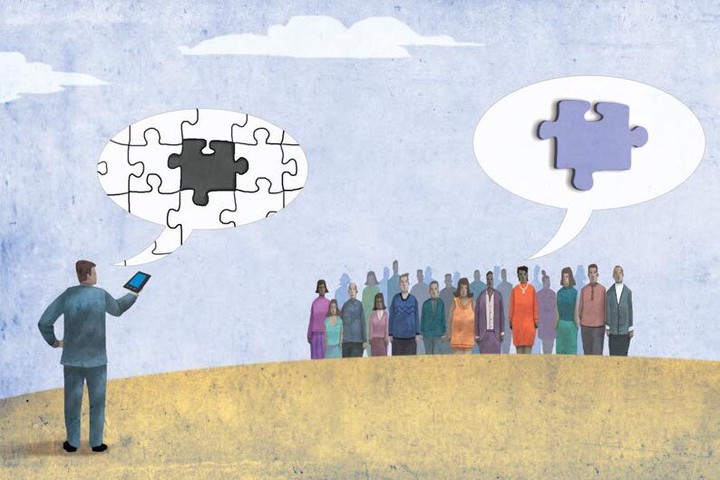
Prize challenges, according to Challenge.gov, are a way for federal agencies to present problems to the public to solve in exchange for receiving awards for the best solutions. Prize challenges use crowdsourcing to encourage innovations that might not otherwise be possible with government contracts or grants. The cost savings afforded to the government that prize challenges bring are indisputable; rather than paying for years of research and development that may or may not result in a useable product, crowdsourcing the most pressing problems results in innovation that produces useable technology before the government has to invest any funds. Instead, the government’s payments are contingent on success. Also referred to as open innovation, or inducement prizes, this concept is not a new one.
Historical Uses of Crowdsourcing Innovation
In 1714, the British Parliament offered a cash prize of £20,000, worth $2 million today, for a navigational innovation to allow sailors to determine longitude at sea. John Harrison, a self-taught clockmaker, answered the call by inventing the chronometer, a device that revolutionized naval travel, and elevated Britain to a naval powerhouse for centuries. Napoleon Bonaparte offered 12,000 francs, $35,000 today, in 1795 for a way to preserve food for his troops, which was collected by Nicholas Appert who developed the canning process. Historically, prize challenges were the primary way governments solved problems they could not otherwise solve.
Government-Run Prize Challenges
United States government contracts or grants are not the most cost-effective way to innovate, according to Thomas Kalil, the former Deputy Assistant of Technology and Innovation Policy during the Clinton administration. Kalil reports witnessing over his tenure millions of dollars being spent on contracts or grants to pursue research or development that never bore any fruit. Kalil now advocates for open innovation via prize challenges. In a 2006 Policy Proposal with the Hamilton Project, Kalil stated, “Under certain circumstances, inducement prizes may act as a useful complement to grants and contracts as a way to encourage technological innovation. The government can establish a goal without determining who is in the best position to reach the goal or what the most promising technical approach is.”
The U.S. government has since used open innovation and crowdsourcing to maximize cost savings to the government. A Pentagon pilot program ran a prize challenge for $1 million to innovate autonomous vehicles. The technology led to the driverless cars being tested by Google, Tesla and Uber. NASA’s Centennial Challenge was initiated in 2005 to “directly engage the public in the process of advanced technology development,” by offering “incentive prizes to generate revolutionary solutions to problems of interest to NASA and the nation” and “seeks innovations from diverse and non-traditional sources,” including “small businesses, student groups, and individuals.” The Department of Health and Human Services and the National Institute of Health have run hundreds of contests that have led to the formation of new companies and partnerships while solving real health problems. These and other government competitions have: resulted in apps that quickly identify pathogens or aid with asthma attacks; spurred undergraduate students to invent a device that measures lung function; and has led to various tools to diagnose, track, and protect health workers from ebola.
Prize Challenges in the Private Sector
A prize challenge was used by Xprize to develop the first private reusable rocket ship. The $10 million prizes went to Mojave Aerospace Ventures for SpaceShipOne, which was licensed by Richard Branson for Virgin Galactic. Xprize’s prize challenge gave birth to a $2 billion private space industry, with Elon Musk and Jeff Bezos now competing to make space travel available to the paying public.
The Impact
The publicity generated by a prize challenge can be a powerful incentive for private investment to solve a government problem that can be greater than the value of the prize. A large cash prize is not always necessary. The potential to win a government contract upon successfully solving the problem presented can be the incentive. Lucian Kay, Research Associate at UC Santa Barbara’s Institute of Social, Behavioral and Economic Research, studies the effect of prizes on open innovation. Kay states “that the motivations to compete for prizes are as diverse as the people and teams that participate.” Whether it is the publicity, the prestige, a new company or government contract, or even the cash itself, the government wins by solving a problem in exchange for a sum certain as the prize.
Kalil contends that governments tend to take on huge programs all at once to solve problems without knowing until well down the line the program might not be effective. Instead, Kalil urges the use of his list of 25 tools for governments. In addition to prize challenges, Kalil advocates for government agencies to break down their problems into smaller pieces of the puzzle to solve. Rather than spending a large amount of money on a program only to find it doesn’t work, Kalil says governments should do problem solving incrementally, and get proof of concept from the end user. By creating small prize challenges, the government agency can see what works and fix what doesn’t in the next version.
HeroX provides all the tools necessary to run a successful prize challenge. Find innovative solutions on HeroX through the power of crowdsourcing. We provide a turnkey platform where our clients' design challenges around problems they need solved, and our solvers work to come up with a solution and win the prize. Contact us today and speak to one of our challenge experts to find out how HeroX can assist your government agency in solving your most pressing problems using the power of prize challenges and open innovation.








